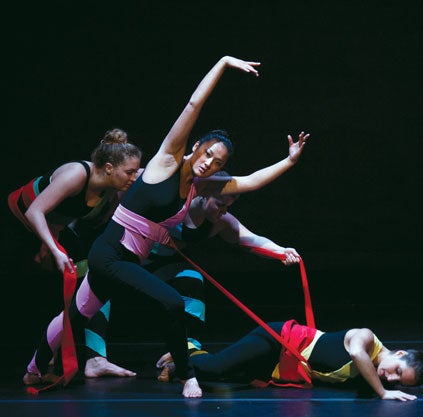 The World Wide Web, stem cell research, the Hubble Space Telescope, GPS, the Human Genome Project, Google: A lot of global game changers have emerged out of the past quarter century. Twenty-five years ago, we couldn’t have foreseen the transformation in our landscape, the far-reaching impact these developments would have in our daily lives. Now it’s hard to fathom a world without them.
The World Wide Web, stem cell research, the Hubble Space Telescope, GPS, the Human Genome Project, Google: A lot of global game changers have emerged out of the past quarter century. Twenty-five years ago, we couldn’t have foreseen the transformation in our landscape, the far-reaching impact these developments would have in our daily lives. Now it’s hard to fathom a world without them.
In 1990, the College introduced its own game changer when it established the School of the Arts, forever changing the academic and cultural landscape of the institution and of Charleston’s arts scene. Twenty-five years later, it’s hard to imagine the College – or the city – without it. Not only does the school have one of the largest footprints on campus (consider the 2009 addition of the 70,000-square-foot Marion and Wayland H. Cato Jr. Center for the Arts, which includes the Halsey Institute of Contemporary Arts as well as studios, practice rooms and offices), it has one of the largest and most high-profile presences within Charleston’s arts and cultural scenes as well.
“For a quarter century, the school has presented educational and cultural programs that have enriched the lives of South Carolinians and visitors to the state,” the South Carolina Arts Commission says of the College’s SOTA, which it awarded the prestigious Elizabeth O’Neill Verner Award in 2015. “The service that its students, alumni, faculty and staff have rendered to the state make it an integral part of a vibrant arts community that extends well beyond the Lowcountry.”
Indeed, the school’s programs, faculty and students are integral to the North Charleston Cultural Arts Department, the City of Charleston Office of Cultural Affairs, Spoleto Festival USA and Piccolo Spoleto Festival. And, with more than 200 events offered to the public each year, its educational and cultural programming (such as exhibitions, lecture series, the Charleston Music Fest, International Guitar Series, Charleston Jazz Initiative, 2nd Monday Series and International Piano Series) has become a staple on the city’s cultural calendars.
Just as the Internet didn’t come about overnight, SOTA didn’t emerge suddenly as a star. It was born out of a long, slow, deliberate expansion of the College’s interdisciplinary major in fine arts. In fact, the Albert Simons Center for the Arts was constructed in 1979 – anticipating the school’s establishment by a decade. And, once it was created, the school took off, growing into four departments (art and architectural history, music, studio art, and theatre and dance) with programs in arts management, historic preservation and community planning, and computing in the arts – and it has added graduate programs in teaching the performing arts and arts management as well.
“The school has grown. There were 600 majors when I got here in 1998; there are over 900 now,” says Dean Valerie Morris. “There has been a growth in the quality in the programs, too. There have been all kinds of significant developments.”
And, Morris promises, there will continue to be. Her objectives for the next chapter include building the school’s national recognition by hosting conferences and other groups on campus, as well as fulfilling the long-held plans to renovate the Simons Center.
“That’s a multi-multi-multi-million dollar project – over $50 million,” says Morris. “The earliest that would begin would be 2017, and that’s being optimistic. But that’s the next big thing to come.”
It may seem like a distant dream now, but – hey, a lot can happen in a quarter century.





